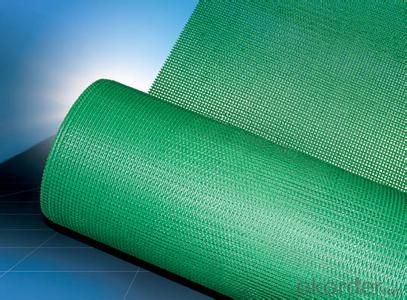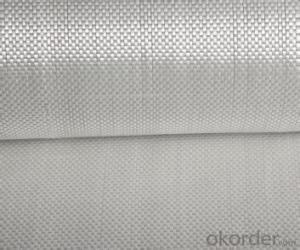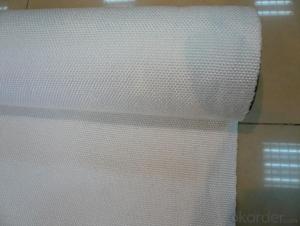Silica Fiberglass Fabrics
- Loading Port:
- China Main Port
- Payment Terms:
- TT OR LC
- Min Order Qty:
- -
- Supply Capability:
- -
OKorder Service Pledge
Quality Product, Order Online Tracking, Timely Delivery
OKorder Financial Service
Credit Rating, Credit Services, Credit Purchasing
You Might Also Like
Quick Details
| Place of Origin: | Brand Name: | Model Number: | |||
| Application: | Weight: | Surface Treatment: | |||
| Width: | Weave Type: | Yarn Type: | |||
| Alkali Content: | Standing Temperature: | style: | |||
| soft point: | working temp.: | thickness: | |||
| advantage: | usage: |
Packaging & Delivery
| Packaging Detail: | cartons, pallet |
| Delivery Detail: | about 30 days upon confirmation |
Specifications
silica cloth
plain or satin woven
high temperature insulation
non-asbestos product
good chemical stability
- Q: What are the different fiberglass fabric weaves for thermal insulation?
- For thermal insulation purposes, there exist multiple types of fiberglass fabric weaves that are commonly utilized. These weaves are specifically designed to offer exceptional heat resistance and insulation capabilities. The plain weave is one of the most frequently employed weaves for thermal insulation. It is characterized by a straightforward over-under pattern, where each weft thread alternates between passing over and under each warp thread. This particular weave is renowned for its balanced strength and stability, rendering it suitable for a wide array of applications. Another popular option for thermal insulation is the satin weave. This weave is distinguished by a succession of floating warp or weft threads that traverse over several consecutive threads prior to intertwining again. As a result, the satin weave produces a smooth and lustrous fabric with a high degree of flexibility and drapability. It is an ideal choice for scenarios that necessitate a lightweight and flexible insulation solution. The twill weave, featuring a diagonal pattern created by the interlacing of warp and weft threads, is another viable alternative for fiberglass fabric used in thermal insulation. Twill weaves are celebrated for their strength and durability, making them a suitable option for applications demanding a more robust insulation solution. Furthermore, the leno weave is frequently employed for thermal insulation purposes. This weave entails the twisting of adjacent warp threads around one another to generate small, open spaces within the fabric. These spaces facilitate improved air circulation and moisture management, positioning leno weave fabrics as an excellent choice for situations where breathability is crucial. Ultimately, the selection of a fiberglass fabric weave for thermal insulation will depend on the specific requirements of the application, encompassing desired insulation properties, flexibility, strength, and breathability.
- Q: What are the different fiberglass fabric weights for lightweight applications?
- There are typically three different fiberglass fabric weights used for lightweight applications: 3 oz, 6 oz, and 9 oz.
- Q: Is fiberglass fabric resistant to staining?
- Yes, fiberglass fabric is generally resistant to staining. The material is made from fine fibers of glass, which are woven together to create a strong and durable fabric. Fiberglass fabric is known for its non-porous nature, which means that it does not easily absorb liquids or substances that could cause staining. This makes it highly resistant to most stains, including those caused by common household items such as food, beverages, oil, and grease. Additionally, fiberglass fabric is often treated with a protective coating or finish, further enhancing its stain-resistant properties. However, it is important to note that while fiberglass fabric is resistant to staining, it is not completely immune to all types of stains. Some particularly stubborn or harsh substances, such as certain chemicals or dyes, may be able to cause discoloration or staining on fiberglass fabric. Therefore, it is always advisable to promptly clean any spills or stains on fiberglass fabric to ensure its long-term durability and appearance.
- Q: What are the different thicknesses of fiberglass fabric used in insulation?
- Depending on the specific application and desired level of thermal resistance, the thicknesses of fiberglass fabric used in insulation can vary. Manufacturers and regions may offer varying thickness options, typically ranging from 1 inch (25mm) to 4 inches (100mm) or more. The chosen thickness depends on factors such as the desired insulation R-value, available installation space, and specific project requirements. Thicker fiberglass fabric provides higher thermal resistance, improving insulation performance and reducing heat transfer and energy loss. However, thicker insulation requires more installation space and may be more expensive. Therefore, it is important to carefully consider project needs and limitations when determining the appropriate thickness of fiberglass fabric for insulation.
- Q: Can fiberglass fabric be used for making industrial curtains?
- Industrial curtains can indeed be made using fiberglass fabric. This material is known for its strength and durability, as well as its resistance to heat, chemicals, and abrasion. It is frequently utilized in industrial settings where protection and safety are of utmost importance, such as manufacturing plants, warehouses, and construction sites. Moreover, fiberglass fabric possesses exceptional insulation properties, making it highly suitable for creating curtains that can effectively regulate temperature and minimize energy expenses. Furthermore, its lightweight and flexible nature enable effortless installation and maintenance. In summary, given its robustness, durability, and insulation capabilities, fiberglass fabric proves to be an appropriate option for producing industrial curtains.
- Q: Can fiberglass fabric be used for seals?
- Yes, fiberglass fabric can be used for seals. Fiberglass fabrics have excellent thermal, chemical, and electrical resistance properties, making them suitable for various sealing applications. They can be used to create gaskets, seals, and insulation materials for a wide range of industries, including automotive, aerospace, marine, and electrical. The high strength and flexibility of fiberglass fabric allow it to conform to irregular surfaces and provide a reliable and durable seal. Additionally, fiberglass fabric is resistant to moisture, oils, and most chemicals, ensuring the longevity and effectiveness of the seals.
- Q: What are the characteristics of glass fiber acoustic panels?
- Have a good shape, small volume density, thermal conductivity, both thermal insulation, sound-absorbing performance, corrosion resistance, chemical stability. Glass fiber sound-absorbing panels, referred to as glass wool or sound insulation cotton, glass wool is a category of glass fiber, is a man-made inorganic fiber. Glass wool is the melting of glass fiber, forming a cotton like material, the chemical composition of the glass, is an inorganic fiber.
- Q: What is the lifespan of fiberglass fabric?
- The lifespan of fiberglass fabric can vary depending on factors such as its quality, usage, and maintenance. However, on average, fiberglass fabric can last anywhere from 10 to 30 years with proper care and handling.
- Q: How is fiberglass fabric bonded to other materials?
- Fiberglass fabric can be bonded to other materials using various methods such as adhesive bonding, heat bonding, or mechanical fastening. Adhesive bonding involves applying a suitable adhesive or glue to the surfaces of both the fiberglass fabric and the other material, allowing them to bond together upon curing. Heat bonding, on the other hand, involves using heat to melt or soften the fiberglass fabric and the other material, enabling them to fuse together upon cooling. Mechanical fastening involves using various fasteners like screws or nails to secure the fiberglass fabric to the desired material. The choice of bonding method depends on the specific application and the materials involved.
- Q: Is fiberglass fabric resistant to rot and decay?
- Fiberglass fabric boasts a remarkable resistance against rot and decay, owing to its composition of inorganic components like glass fibers and resins. These elements are impervious to biological decomposition, thus rendering fiberglass fabric an unsuitable habitat for the proliferation of mold, fungi, or bacteria, the primary culprits of organic material decay. Furthermore, fiberglass exhibits exceptional moisture resistance, which inhibits the growth of these microorganisms. Consequently, fiberglass fabric proves itself as a durable and enduring material capable of enduring harsh environmental conditions without succumbing to rot or decay.
Send your message to us
Silica Fiberglass Fabrics
- Loading Port:
- China Main Port
- Payment Terms:
- TT OR LC
- Min Order Qty:
- -
- Supply Capability:
- -
OKorder Service Pledge
Quality Product, Order Online Tracking, Timely Delivery
OKorder Financial Service
Credit Rating, Credit Services, Credit Purchasing
Similar products
Hot products
Hot Searches
Related keywords
























